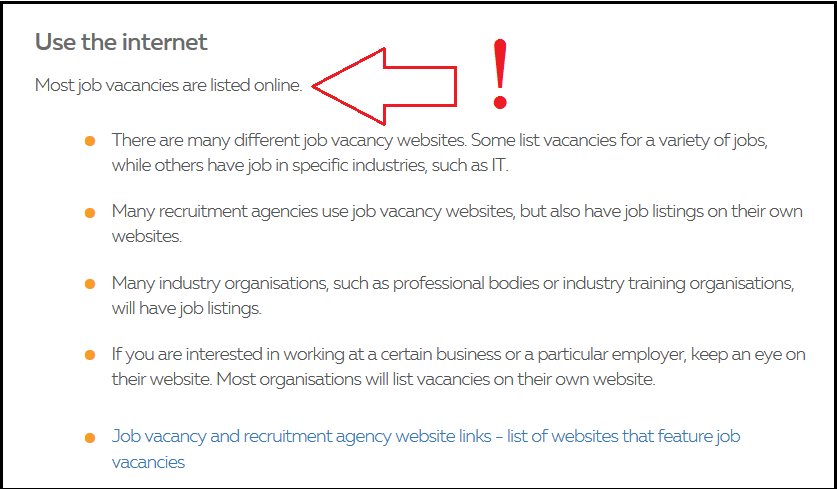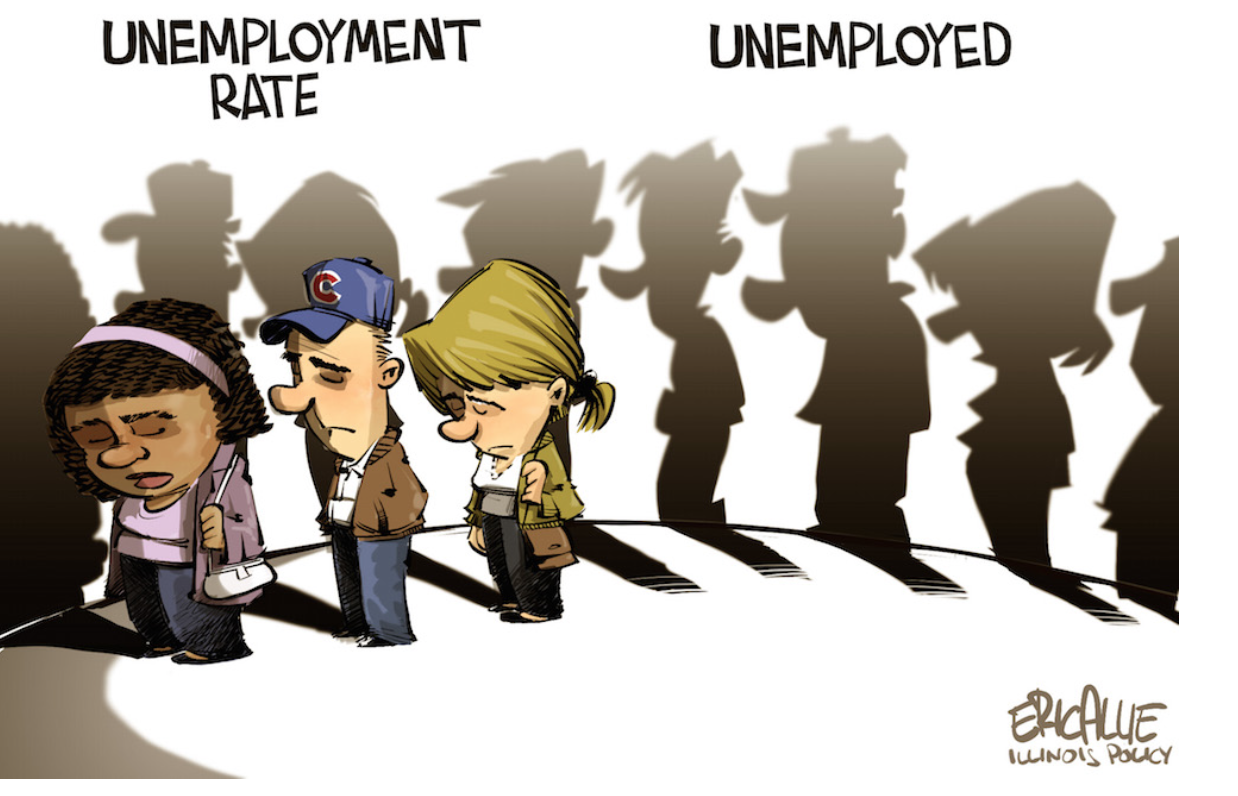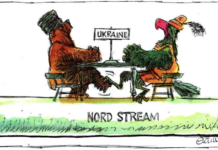.

.
The mainstream media – or at least one clever journalist working for Mediaworks/Newshub – has finally caught up with a story broken by this blogger last year that unemployment data from Statistics NZ was no longer reliable;
.

.
Fake Stats
Last year, I revealed how Statistics NZ had revised it’s definition of what constituted being unemployed;
On 29 June 2016, Statistics NZ announced that it would be changing the manner in which it defined a jobseeker;
Change: Looking at job advertisements on the internet is correctly classified as not actively seeking work. This change brings the classification in line with international standards and will make international comparability possible.
Improvement: Fewer people will be classified as actively seeking work, therefore the counts of people unemployed will be more accurate.
The statement went on to explain;
Change in key labour market estimates:
Decreases in the number of people unemployed and the unemployment rate
Changes to the seasonally adjusted unemployment rate range from 0.1 to 0.6 percentage points. In the most recent published quarter (March 2016), the unemployment rate is revised down from 5.7 percent to 5.2 percent
Increases in the number of people not in the labour force
Decreases in the size of the labour force and the labour force participation rate
The result of this change? At the stroke of a pen, unemployment fell from 5.7% to 5.2%.
Simply because if a person was job-searching using the internet they were “not actively seeking work”.
Which beggars belief as the majority of jobseekers will be using the internet. It is the 21st century – what else would they be using?
I pointed out that jobseekers in the 21st Century would be using internet websites – as government departments WINZ and Careersnz were at pain to point out on their own websites;
.

.

.
“Most job vacancies are listed online” – CareersNZ.
“Most jobs in NZ are advertised online” – WINZ
Evidently Statistics NZ did not get the memo.
Dodgy Data, Sham Stats
The ‘revision’ of definitions follows from another dubious Statistics NZ criteria for how they measure unemployment;
Employed: people in the working-age population who, during the reference week, did one of the following:
* worked for one hour or more for pay or profit in the context of an employee/employer relationship or self-employment
* worked without pay for one hour or more in work which contributed directly to the operation of a farm, business, or professional practice owned or operated by a relative
As I questioned last year; if working one hour, without pay, is the minimum criteria to be considered “employed”, then what must our true rate of unemployment actually be?
The msm seemed oblivious to what was been perpetrated.
National, however, were quick to capitalise on the ‘revised’ September statistics, as this Twitter-meme showed on 2 November 2016;
.

.
Newshub looks deeper
Writing for Mediaworks/Newshub, Anna Bracewell-Worrall realised that Statistic NZ unemployment data is not as reliable as New Zealanders have been led to believe;
The official unemployment rate in New Zealand has hit an eight-year low of 4.8 percent.
Sounds impressive, right? Sounds like the kind of employment environment where the worker rules – where there is little competition for jobs, and bosses are so desperate for workers they are offering great salaries and benefits.
But the 4.8 percent unemployment statistic is not telling the full story.
There are 1 million New Zealanders not in jobs and not counted in either the unemployment or employment rate. Many of the 1 million people ‘not in the labour force’ are doing things like studying or caring for a family member.
She didn’t quite get it right when she asserted;
To count as unemployed, people must have actively sought work within the past month and be available for work within the next four weeks. ‘Actively sought’ means they contacted an employer, placed an ad to find a job or took steps to set up a business.
You might be trawling Seek for a forestry job in Kaikohe, but if you don’t apply for anything in the month before the employment survey takes place, you count as ‘outside the workforce’.
Ms Bracewell-Worrall asked the $64,000 + gst question;
So, are we being misled by statistics boasting low unemployment rates?
The answer was provided by Bill Rosenberg, economist at the Council of Trade Unions;
[Rosenberg] says when people read headlines saying New Zealand has a 4.8 percent unemployment rate, they are not getting the full picture.
“When [people] look at that figure, they get a false sense of wellbeing. Actually, there’s a lot more people out there who are still wanting work.”
He said he’s never been particularly happy with the exclusion of people who have stopped looking for work.
“It’s a fairly brutal definition, really. It’s what’s used internationally, but it really doesn’t take into account the nature of the jobs that are out there and the difficulties people can have in finding those jobs.”
“There are a lot of people who are not getting what they need from employment,” he said, be it enough hours or enough pay.
Statistics NZ has accepted that their measurement of “official unemployment” is flawed and presents a distorted picture;
The number of people unemployed and the unemployment rate are widely used as indicators of labour market performance and unutilised labour resources in the economy. For many years the measure of unemployment and the unemployment rate have been criticised from both an economic and social perspective. Some of the main criticisms are that the unemployment rate:
-
fails to capture labour market downturns in all contexts
-
does not fit with common perceptions of ‘lack of work’
-
is no longer sufficient on its own in increasingly diversifying labour markets to describe all aspects of attachment to the labour market and insufficiency in paid work
-
fails to capture the economic hardship experienced by individual workers.
To counter criticism that the Household LabourForce Survey was presenting dubious data and under-reporting real unemployment and under-employment, Statistics NZ has offered a new(ish) category of “under-utilisation” (see Addendum below for full details);
Statistics NZ will produce official underutilisation statistics using data from the quarterly HLFS. The HLFS redesign will enable more accurate reporting of underutilisation statistics, in line with the recommendations of the International Labour Organisation (ILO, 2013).
[…]
The underutilised population are people who were either unemployed, underemployed, or in the potential labour force.
Crucially, the “Potential Labour Force” sub-category includes;
…available potential jobseekers – people who are not actively seeking work but were available in the reference week and want a job (the ‘discouraged’ are included in this group).
This is a marked improvement from Statistics NZ’s earlier arbitrary decision not to include unemployed job-seekers who were using on-line methods to find paid work;
Looking at job advertisements on the internet is “correctly” classified as not actively seeking work
The Bogus Stats – 4.8%
The July 2017 Quarter of Labour Market Statistics presented good news. The unemployment rate had fallen to 4.8%.
National were quick to seize on the data;
The latest Household Labour Force Survey (HLFS) shows the unemployment rate is now at the lowest level since the start of the Global Financial Crisis (GFC) says Tertiary Education, Skills and Employment Minister Paul Goldsmith.
“The unemployment rate has fallen to 4.8 per cent in the June 2017 quarter, the lowest rate since December 2008. Our strong economy continues to deliver for New Zealanders,” Mr Goldsmith says.
“The number of people unemployed has dropped by 3,000 this quarter, reflecting a robust labour market and increasing employment opportunities.
It was bogus of course. Stats NZ were using their dodgy definitions to conjure up that figure of 4.8%.
The Real Stats – 11.8% !
However, the Under-utilisation rate offers a more sober picture;
In the June 2017 quarter, the seasonally adjusted underutilisation rate fell by 0.5 percentage points to 11.8 percent. This represents 13,000 fewer underutilised people, down to 327,000.
New Zealand’s real unemployed/under-employed stands at 11.8% – over double the “official unemployment rate”. That figure is not what the msm will be showing the country any time soon.
Which begins to answer the question why – when we supposedly have low unemployment – are wages continuing to stagnate?
.

.
Capitalist Supply & Demand dogma states that in times of shortage of labour, wages must rise. This has not been happening.
Current high migration has been offered as one reason.
A more credible reason is that the country’s “low unemployment” has been an illusion. Unemployment/under-employment is much higher than the public and msm have been led to believe.
New Zealand is experiencing hidden unemployment/under-employment and the truth is only now slowly starting to emerge. The question remaining to be asked is; will the msm cease focusing on trivia and begin to do some meaningful investigative work?
Newshub has started the ball rolling. Let’s hope they continue and others pick up on this.
Because this is the REAL news:
.
Unemployment/under-employment – July, 2017: 11.8%
.
Addendum
The full sub-categories and definitions of Under-utilised labour is:
The underemployed
There are several types of underemployment. The measure used here is time-related underemployment, which exists when an employed individual wants to work more hours than they usually do and is available to do so.
The ILO guideline (ILO, 2013) defines the underemployed as employed individuals who:
- worked less than a specified threshold of hours (usually part-time), and
- would like to work more hours, and
- were available to do so in the reference week.
The unemployed
According to the international standard definition of unemployment (ILO, 2013), the unemployed comprises all individuals who in the reference week:
- were not in employment, and
- were available to work, and
- were actively seeking employment.
The potential labour force
The potential labour force consists of people who are not in the labour force but can be considered to be ‘just outside it’. They meet two of the three criteria (listed above) needed to be considered unemployed. Two main groups of individuals are in the potential labour force:
- unavailable jobseekers – people who were actively seeking work, were not available to have started work in the reference week, but would become available within a short subsequent period
- available potential jobseekers – people who are not actively seeking work but were available in the reference week and want a job (the ‘discouraged’ are included in this group).
The first group is considered to have slightly closer attachment to the labour market than the second group, but both have much stronger attachment than other groups who are not in the labour force.
The extended labour force
In addition to the measures outlined above that form the underutilised population, a further measure has also been introduced, the extended labour force. It measures the total labour force (those employed and unemployed) plus the potential labour force. This is used as the denominator when constructing the underutilisation rate.
.
.
.
References
Mediaworks/Newshub: Unemployment – Bad news NZ, it’s much worse than you think
Statistics NZ: Household Labour Force Survey – Revisions to labour market estimates
Careersnz: Job hunting tips
Work and Income: Where to look
Statistics NZ: Household Labour Force Survey – Definitions
Twitter: National (2 Nov)
Statistics NZ: Introducing underutilisation in the labour market
Statistics NZ: The underutilised
Statistics NZ: Labour Market Statistics – June 2017 quarter
National Party: Unemployment at lowest rate since GFC
Radio NZ: Strong GDP makes little difference to average earners – English
Previous related blogposts
The REAL level of unemployment
Roy Morgan Poll: Unemployment and Under-employment up in New Zealand!
Un-employment; under-employment; and the plain unvarnished truth
Lies, Damned lies and Statistical Lies
National exploits fudged Statistics NZ unemployment figures
Weekend Revelations #3 – Greg O’Connor and criminal statistics
Lies, Damned lies and Statistical Lies – ** UPDATE **
2016 – Ongoing jobless tally and why unemployment statistics will no longer be used
.
.
.

.
.
= fs =






And what about those people like me who are rotting on invalids benefit because ACC are refusing to provide me the services so I can work. Where do the disabled population come into this?
I desperately want to work, if I can’t work I don’t want to live. YOu should investigate what’s happening to disabled people and the bullshit marketing around that. How govt choose to promote the 5% of disabled people doing OK while 95% of us are living in unsafe unstable homes, begging for help we need and despised by community.
Neo-liberalism IS NOT MY CULTURE!
If ACC has shoved you off the shelf onto the cheapo option of ‘invalid’s benefit’ there will be little in the pot to help you back into work.
If you earn ‘too much’ you may be required to atone for a year on a lesser rate of income from your benefit, unless you’re fortunate enough to get into decent full time employment.
Suggest you try connecting with beneficiary advocates to get a better picture of what you can access. Be sure that ACC is more likely to give you grief than assistance, although some people have found them ‘wonderful and helped them back into work – la, la.’ (I’m sure it’s true. I’m also sure the stories from the other side are true.)
We don’t seem to have much in the way of providing resources so disabled people can readily return to employment – unless you’re a professional of some kind. Feels like looking up at the floorboards of the OECD rankings, sometimes.
There is a culture of misinformation by MSM and this current Government, for statistics to be accurate and to have any relevance they must be consistent year in year out and be based on the same information and have the same parameters. Basic Human Logic.
All MSM journo’s at best do first yr economics. So they get to learn just enough about the economy to know fuck all but can give witty replies to people who actually know what’s going on in the economy. Even economic professors across New Zealand believe that they have trainings there alternate human experience admirably. You could even ask the lefts leading economist Shamubeel Eaqub mis-leads with the same failed economic models highlighted in Franks blog. Econ students don’t learn modelling until the 3rd or 4th year and by then they are so invested in false ideology like number tampering that they just ignore it.
Ok so a freak journo managed to run the management guantlette and produce something half decent on the economy but her work and employers work totally suck the rest of the year.
Ask any economist how they feel about woman having to steal and prostitute themselves to survive. Or unions, these things aren’t even on there radar and gives a false sense of the economy.
There is a growing awareness that the Western MSM is fooling its populations with false news .A corollary to this pernicious indoctrination is the efforts of Western Governments to hide the real state of their economies by falsifying data. Unemployment data is perhaps the most visible evidence of this trend.I have had a relative living in Australia who has been claiming that the Federal Govt has been fudging their employment figures for the last 15 years at least. I never used to take him seriously.I am now taking notice.Where you will see the most extraordinary disparity between reality and the Govt. employment figures is the U.S. The unemployment figures at the moment point to a resurgent U.S. economy, while exactly the opposite is happening. Dick Chaney, the Ex-U.S. Vice President said” We will create our own Reality!” And they have.We in the West now live in our own alternate universe .How Frank, can we in the West move forwards,if we base our economic infrastructure on lies and falsified data !? Hell and handbaskets come to mind. Your article is very timely!
Political pressure has given way to political control of the Public Service.
The are no longer independent and now appear to be administered by political appointees by subterfuge.
Stats NZ used to give the public access to details of wealth distribution showing the wealth held by various sections of our community.
The form of this has been changed so visibility of what is happening the growing poor is not available in detail.
The Govt control is evident and coupled with effectively hiding the truth about what they are doing to NZ and its people.
A few years ago I acted as xupervisor for a Massey student doing off campus studies, sitting an exam. I was paid some $45, the supervision lasted one afternoon, and I was on the household labour force survey at that time, and it was counted as being employed that whole week. I am retired, was not sctively looking for work, and did tbis as a favour for another person and the student. Shows you how the statistics are collected. Nonsense in, nonsense out.
Are the standards we use any different to the standards other nations use?
The standards are now based on the minimum international neoliberal standard, that means if you work for more than one hour a week you are ’employed’, which serves the narrative of the government. Whether you can actually live or survive on income received on that, that is another question. As you may be a consultant for the Nat Act government, your bit of pay for your appearances here may well feed you and other dependents, as they are usually keen to pay mercenaries and traitors a handsome pay out of the loot they make.
this would explain a lot
as to why money is being rationed
nact are hiding the truth from the markets
new Zealand never really recovered
Now that is a fair question, Gosman. I’m glad you brought it up.
The standard definitions are indeed international standards that Stats NZ has opted to follow;
ref: http://www.stats.govt.nz/browse_for_stats/income-and-work/employment_and_unemployment/improving-labour-market-statistics/hlfs-revisions-key-labour-est.aspx
Which raises the very real problem that under-reporting unemployment through an arbitrarily narrow definition suggests that worldwide unemployment is much higher than we’ve been led to believe.
New Zealand may have decided to follow “international standards” – but those standards themselves are flawed.
The standard used needs to be complete transparency to the public, of all information gathered and able to be gathered.
It must be presented in a way that is clear and easily understood by the general public.
Nothing else is useful, to the employing public who pay for that to be done.
Politics should not enter into the process not political considerations.
The employments stats i am sorry are pathetic. They are there to make the Natz look good thats all. I hope when we have a change of government this way of measuring is reverted back to the old way which was more accurate.
Excellent backgrounder, Frank. I’m sharing this far and wide!!
Fantastic shunning detail there Frank,
Gosh we are fortunate to have your eye for accountancy detail.
The true fact is that this government use “creative accountancy”
Is this most aptly called “with smoke +mirrors”???
Yes National rules = firstly fudge everything.
Then there are those of us who have partners who work and we don’t qualify for any assistance.
Doesn’t help that Im disabled and somehow Im meant to be able to compete against normal people for jobs.
Sick of hearing no all the time.
Keep it coming Frank, these liars have to be outed.
That would actually be wrong.
The under-utilised rate is 11.8%
The unemployed rate is 4.8%
Add the two together to get the unemployed/under-employed rate of 16.6%
Wonder if they’re now going to start looking at the over-utilised. You know, the people doing 45+ hours per week. Wonder what would happen if people found out that politicians were a member of that group often doing 90+ hours every week.
The advantage to measuring over-utilisation would give us the ability to measure how much of the under-utilisation could be reduced if those so over utilised had their hours brought back to the standard 40 hour week.
[…] blogpost was first published on The Daily Blog on 8 August […]
Comments are closed.